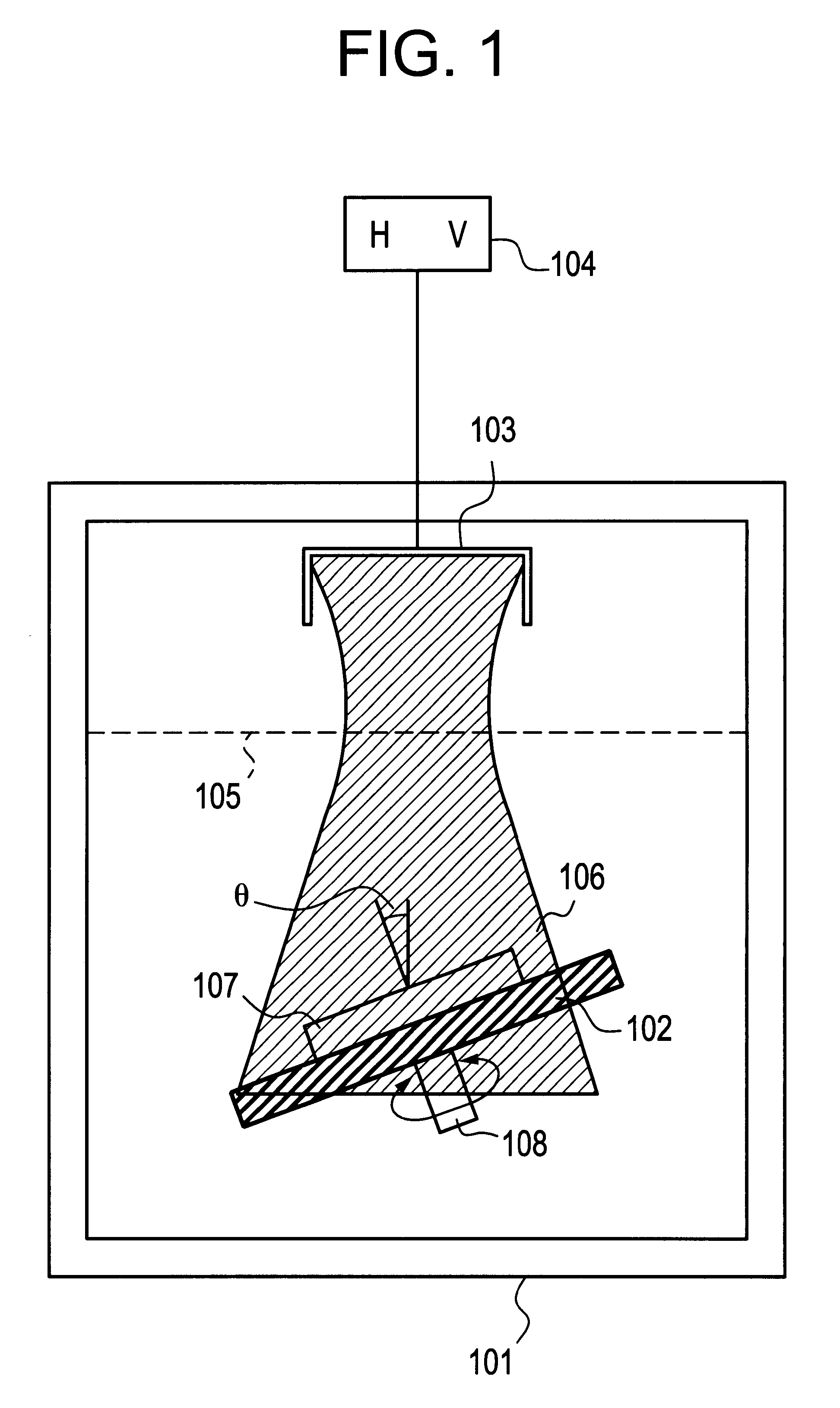Semiconductor device and method of manufacture thereof
a semiconductor and semiconductor technology, applied in the direction of semiconductor devices, electrical devices, transistors, etc., can solve the problems of unstable etching, difficult to produce required ldd structures or offset gate structures, and inability to maintain a screen display for a set tim
- Summary
- Abstract
- Description
- Claims
- Application Information
AI Technical Summary
Problems solved by technology
Method used
Image
Examples
example 2
This example is shown in FIG. 4, and it is one in which, using the invention, an N-channel TFT possessing an overlap LDD and an N-channel TFT that does not possess such an LDD are formed on one and the same substrate.
First, similarly to Example 1, a silicon oxide film was formed to 3000 .ANG. on a substrate 401 (Corning 7059) by a plasma CVD process to constitute a base oxide film 402. Then, an amorphous silicon film for forming an active layer was formed to 500 .ANG. by a plasma CVD process. After that, crystallization was effected by leaving this material in a reducing atmosphere at 550-600.degree. C. for 8-24 hours. There is no objection if a small amount of a catalyst element such as nickel, etc. for promoting crystallization is added at this time. (FIG. 4(A))
Next, the resulting crystalline silicon film 403 was patterned to define silicon films 404 and 405 in the form of islands. These island-shaped silicon films constituted TFT active layers. Then, a 800 .ANG. thick silicon oxi...
example 3
This example is shown in FIG. 5, and it is one in which, using the invention, a complementary circuit consisting of an N-channel TFT possessing a lightly doped drain (LDD) and a P-channel TFT that does not possess an LDD is formed.
First, similarly to Example 1, a silicon oxide film was formed to 3000 .ANG. on a substrate 501 (Corning 7059) by a plasma CVD process to constitute a base oxide film 502. Then, an amorphous silicon film for forming an active layer was formed to 500 .ANG. by plasma CVD process. After that, crystallization was effected by leaving this material in a reducing atmosphere at 550-600.degree. C. for 8-24 hours. There is no objection if a small amount of a catalyst element such as nickel, etc. for promoting crystallization is added at this time. (FIG. 5(A))
Next, the crystalline silicon film 503 was patterned, and silicon films 504 and 505 in the form of islands were defined. These island-shaped silicon films constituted TFT active layers. Then, a 800 .ANG. thick s...
example 4
This example is shown in FIG. 6, and it is one which relates to a monolithic active matrix circuit. In this example, a complementary circuit which was produced by the invention and was constituted by an N-channel TFT and a P-channel TFT possessing lightly doped drain (LDD) regions was used as a drive circuit, and a P-channel TFT that did not possess an LDD was used as a matrix circuit switching element.
First, similarly to Example 1, a silicon oxide film was formed to a thickness of 2000 .ANG. on a substrate 601 (Corning 7059) by a plasma CVD process to constitute a base oxide film 602. Then an amorphous silicon film for constituting an active layer was formed by a plasma CVD process to a thickness of 500 .ANG.. After that, crystallization was effected by leaving the material in a reducing atmosphere at 550-600.degree. C. for 8-24 hours.
Next, the amorphous silicon film was patterned to define silicon films in the form of islands. These island-shaped silicon films constituted TFT acti...
PUM
 Login to View More
Login to View More Abstract
Description
Claims
Application Information
 Login to View More
Login to View More - R&D
- Intellectual Property
- Life Sciences
- Materials
- Tech Scout
- Unparalleled Data Quality
- Higher Quality Content
- 60% Fewer Hallucinations
Browse by: Latest US Patents, China's latest patents, Technical Efficacy Thesaurus, Application Domain, Technology Topic, Popular Technical Reports.
© 2025 PatSnap. All rights reserved.Legal|Privacy policy|Modern Slavery Act Transparency Statement|Sitemap|About US| Contact US: help@patsnap.com



